This page contains affiliate links. Please read our disclosure for more info.
Inle Lake was our favourite part of Burma and one of its most famous attractions. The huge lake in Shan State is 22km long and 11km wide and is surrounded by mountains. As magnificent as the scenery is what we loved most was seeing how life is lived on and around the water. The lake and mountains were beautiful but it was the one-legged fishermen, the colourful tribal markets, the stilted wooden houses, and the impressive floating gardens that kept us at Inle Lake longer than we planned.
The best way to explore Inle Lake is by boat – we rented a motorised canoe with a couple of teenage drivers and set off in the golden early morning light for a full day of exploration.
Fishermen
The most memorable sight of any trip to Inle is the fishermen who balance on one leg on the end of their canoes and use the other leg to paddle the boat, leaving their hands free to cast their nets.
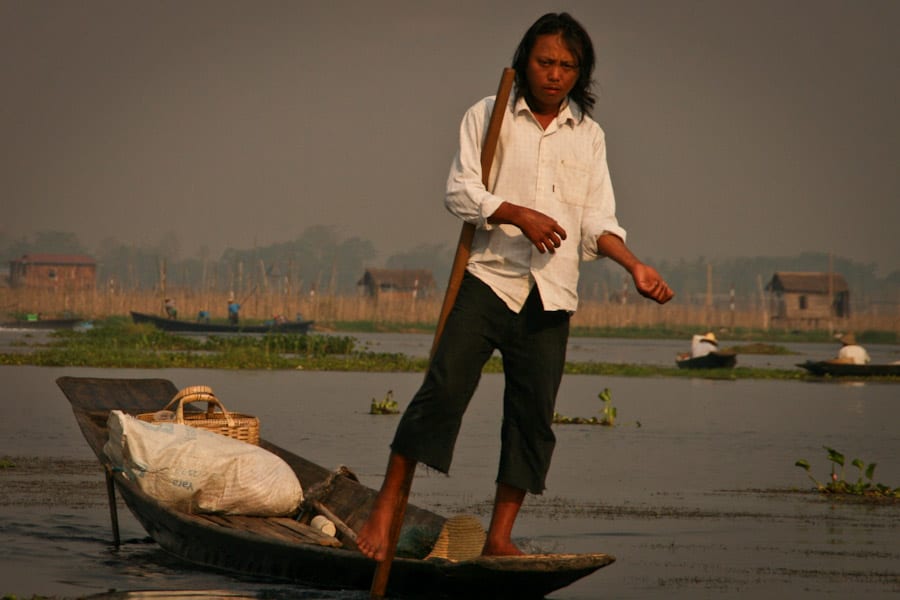
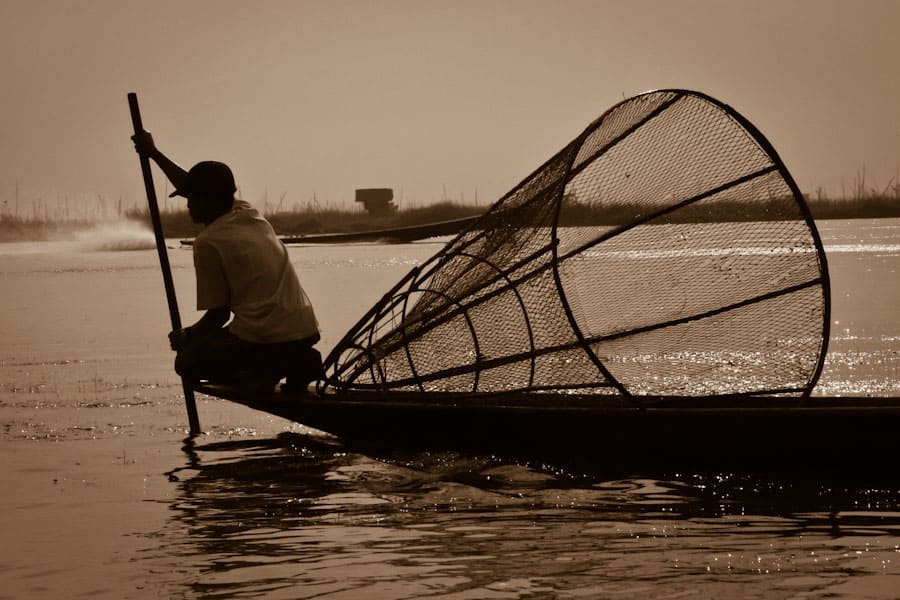
It’s not just fishermen on the lake. Wooden longtail boats with engines or paddled canoes are the transport used by everyone who lives on the lake. We saw boats overflowing with goods from the market, farmers tending to their floating vegetable patches from their canoes, and men collecting piles of seaweed from the lake to use as fertiliser.
Another technique fishermen use is to hit the water with their paddle to scare the fish into their nets below the water.
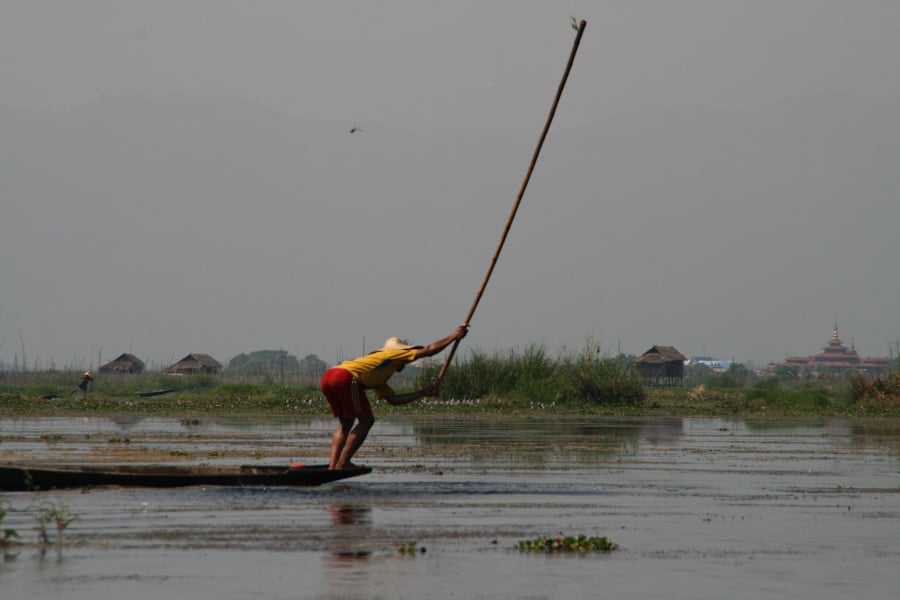
Villages
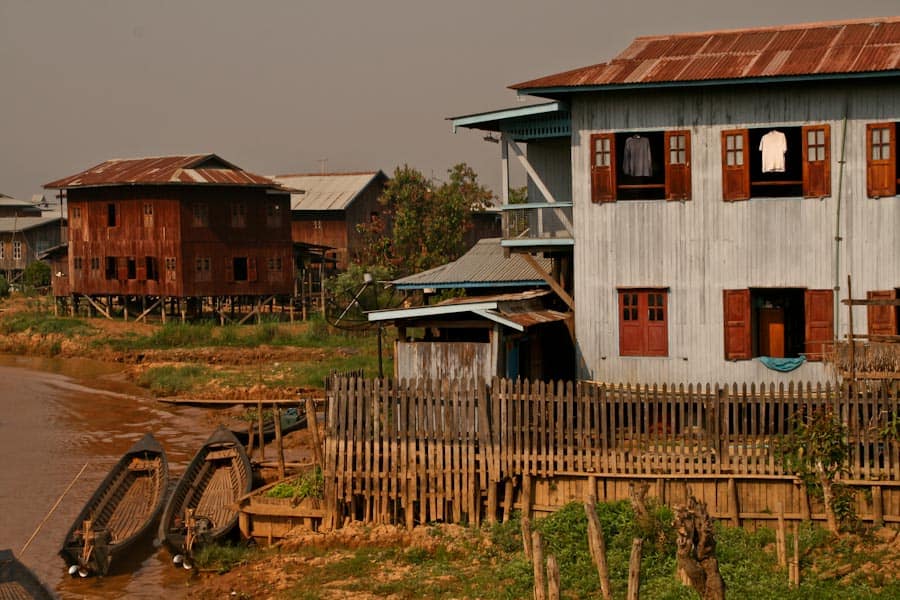
The villages of Inle Lake are wonderfully picturesque. Stilted houses of teak and bamboo line the banks of the lake, and the narrow canals that feed into it. Some villages are even built on the water and access is by boat only. Maing Thauk village is a mixture of the two – the water-based section is linked to the land by a long wooden bridge.
Some homes are simple huts, while others are multi-story structures of sturdy teak and come complete with satellite dishes.
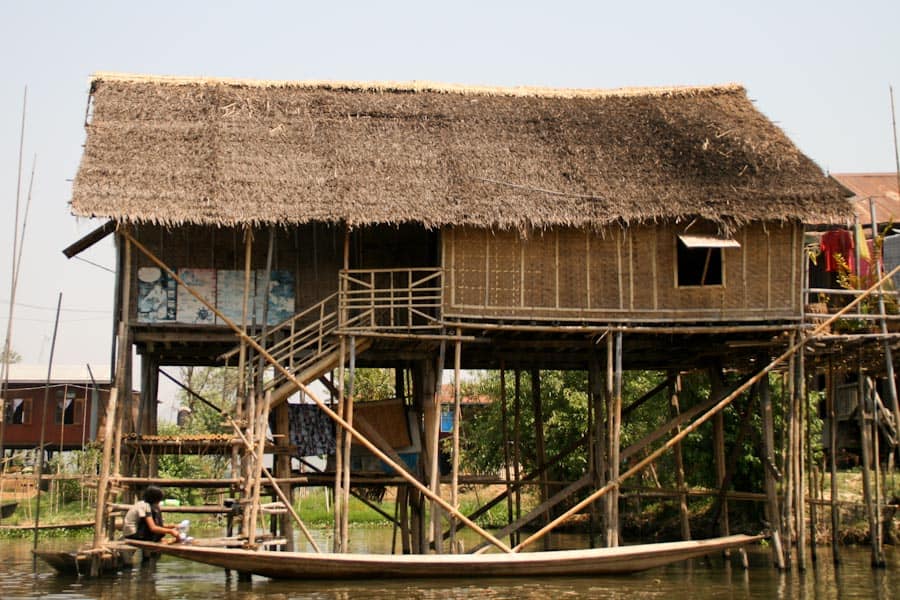
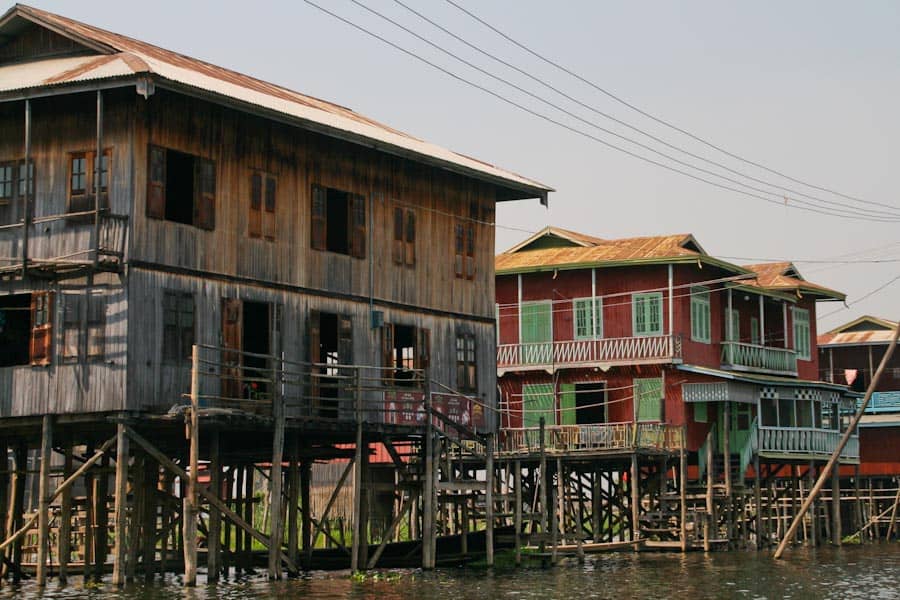
Life is carried out on the banks of the lake and rivers – this is where children play, people bathe, do their laundry, and wash everything from buffaloes to motorbikes.
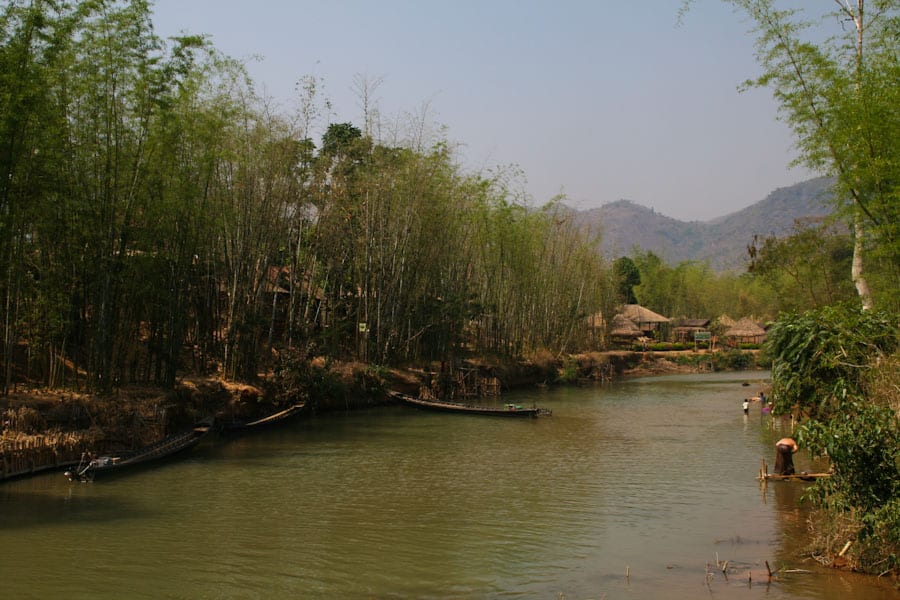
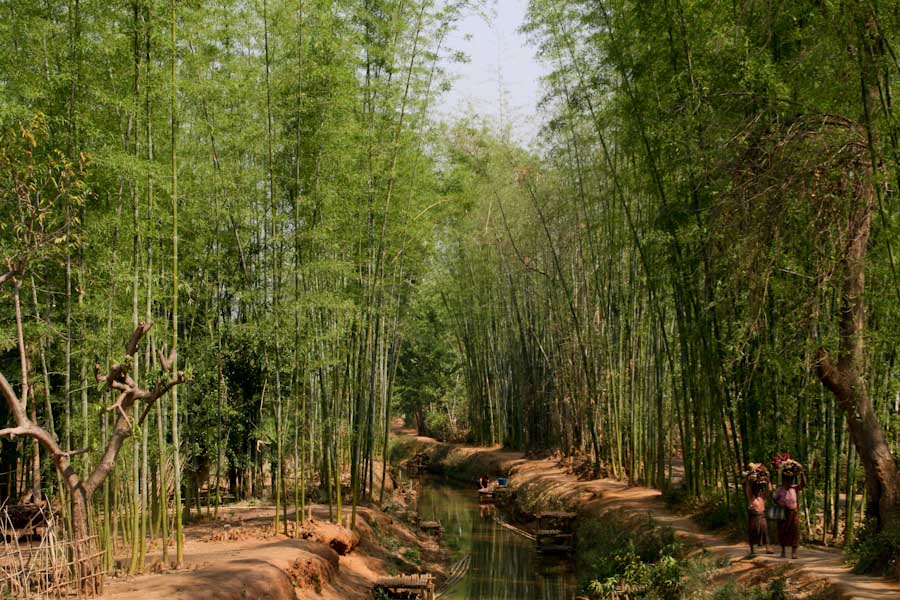
Markets
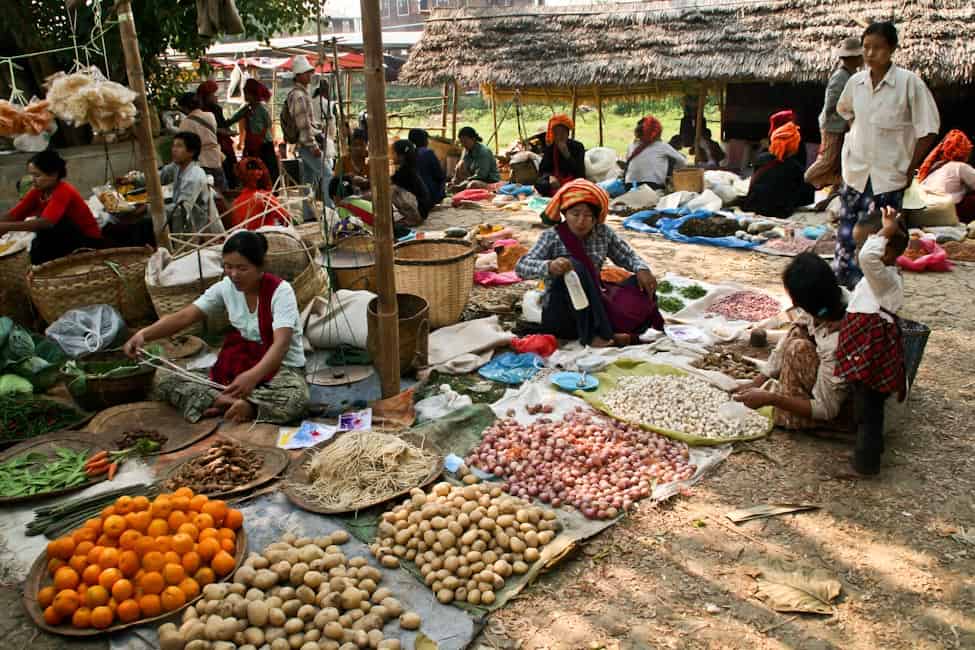
There is a rotating system of five markets in the Inle Lake area when the surrounding hill tribes come to sell and buy produce. We visited the floating market at Ywama, which although is one of the more touristy markets we found it easy to move beyond the souvenir stands to the more interesting food section where locals shopped for fruit, vegetables and lots of fried snacks – we couldn’t resist sampling Burmese doughnuts and pancakes.
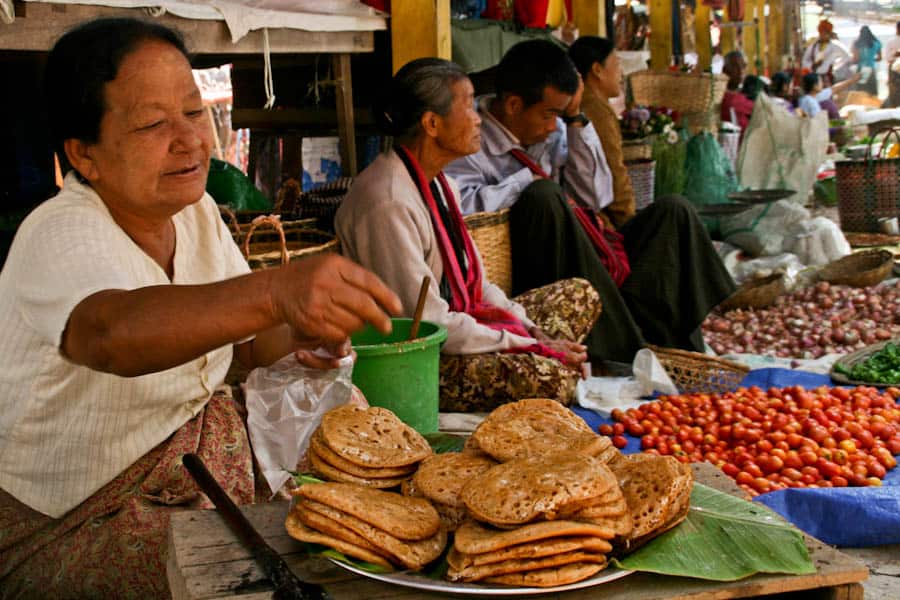
Women with thanaka smeared faces sat on the floor with their produce laid out before them – colourful piles of onions, tomatoes, chillies, dried fish, blocks of soft Shan tofu, and huge stacks of Shan poppadoms.
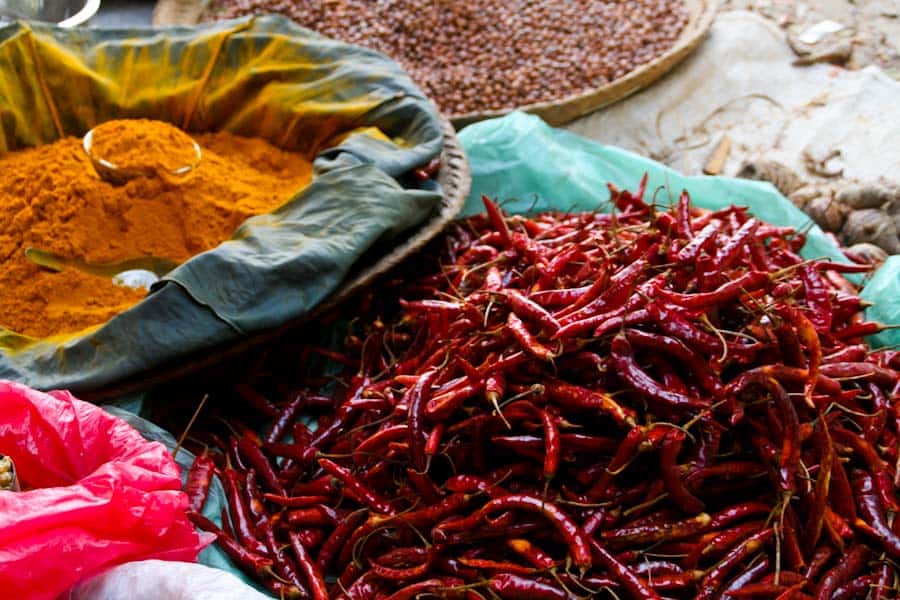
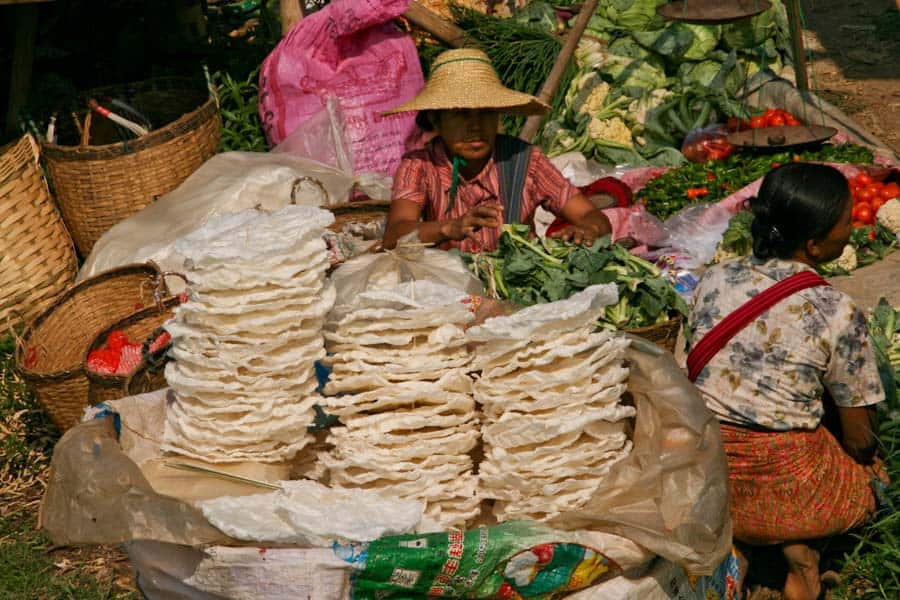
Craft Workshops
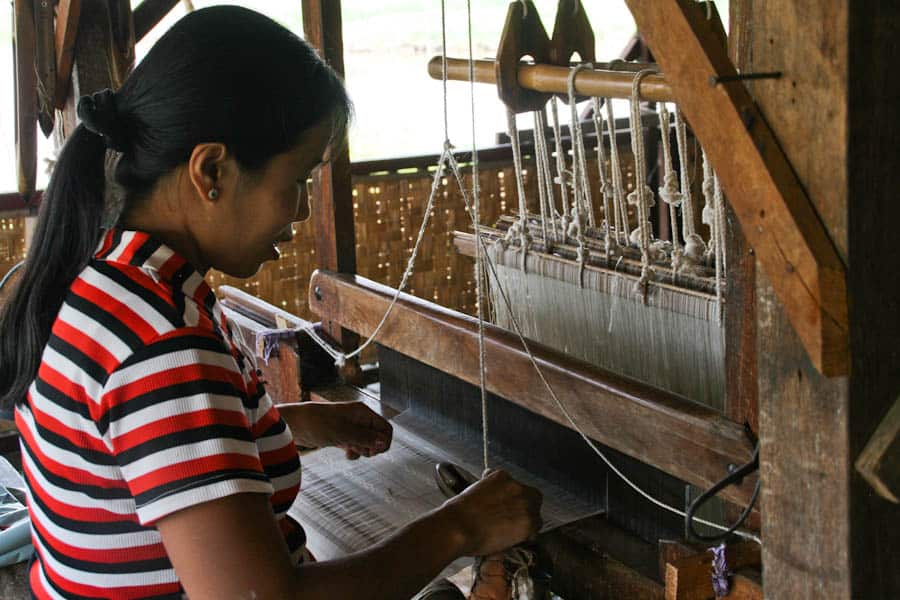
One of the more touristy, but interesting aspects of an Inle Lake boat tour are the visits to craft workshops. We saw silver jewellery, paper, and lotus and silk fabrics being made. There are attached shops of course and although we were shown around there was no hard sell. It would be a good place to buy souvenirs so make sure you take enough cash – dollars and kyat are accepted.
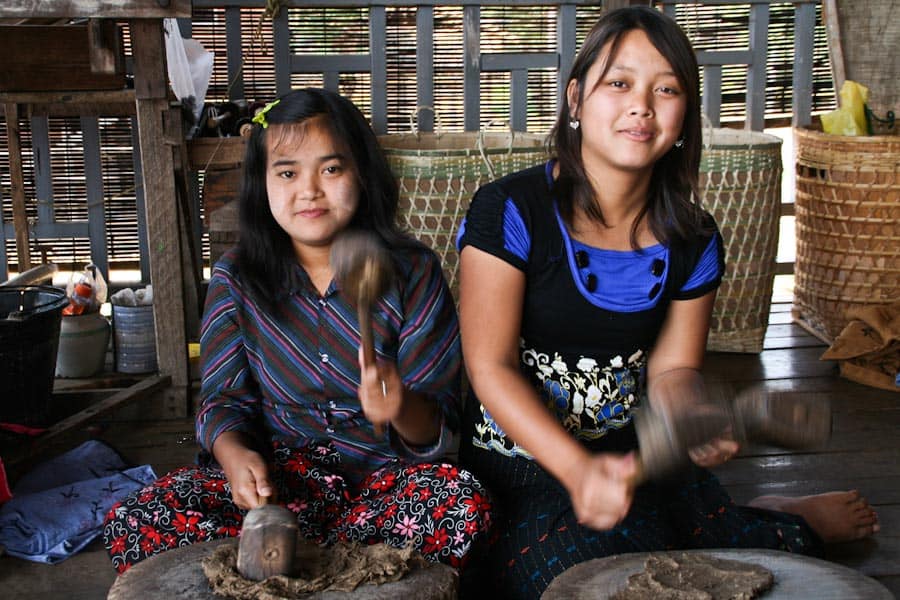
The paper making was particularly interesting. Teenage girls pounded the tree bark threads in water for 25 minutes before stretching it, adding real flowers and letting it dry in the sun for two hours. The paper is used to make colourful umbrellas.
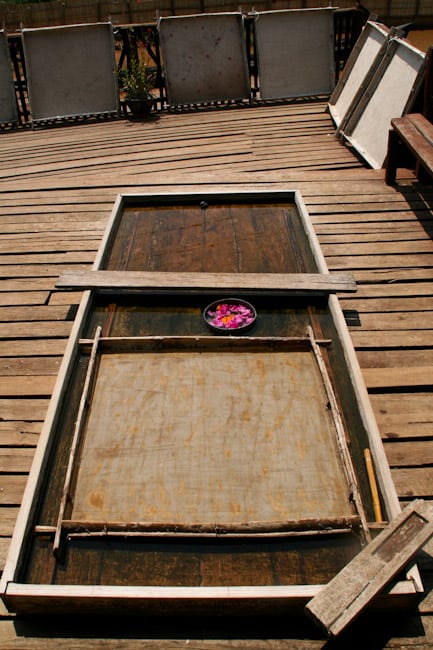
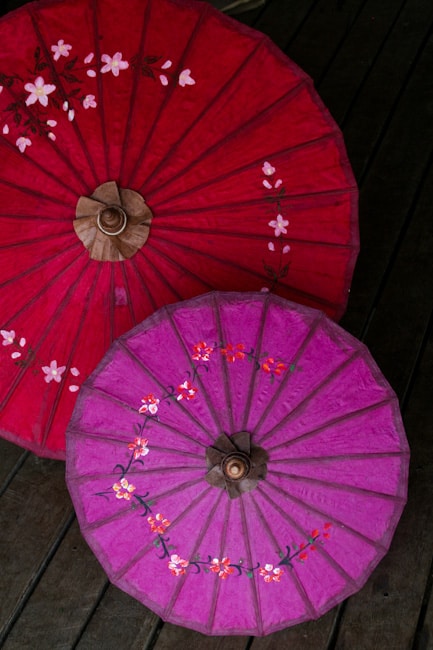
Temples
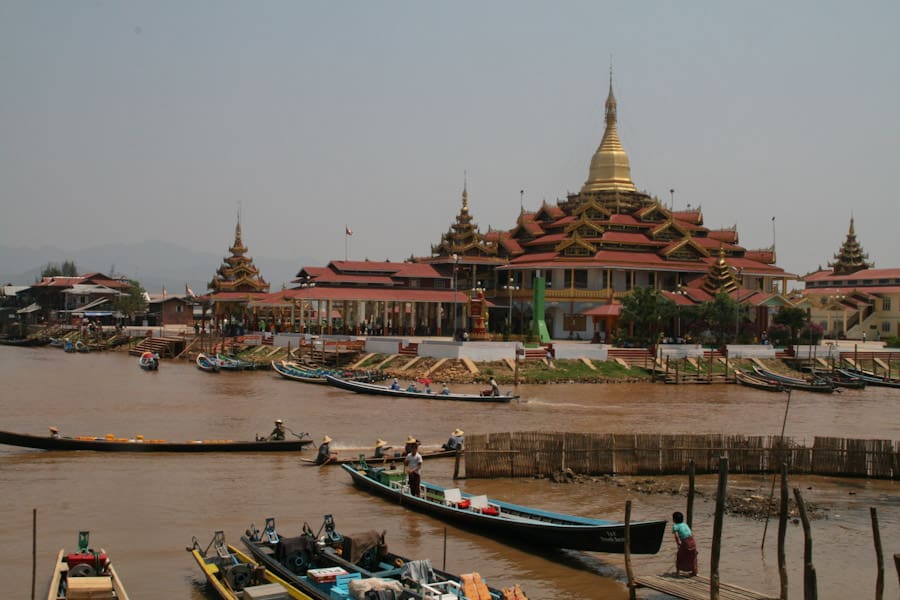
We definitely recommend you include the village of Inthein on your Inle Lake itinerary. We loved the boat trip down the narrow waterways to reach the village under bamboo bridges and through mini-dams built from straw.
The main attraction of Inthein is the hilltop temple Shwe Inn Thein Paya with 1054 pagodas. Some have been reconstructed in shimmering gold and others lean precariously, crumbling in the vegetation.
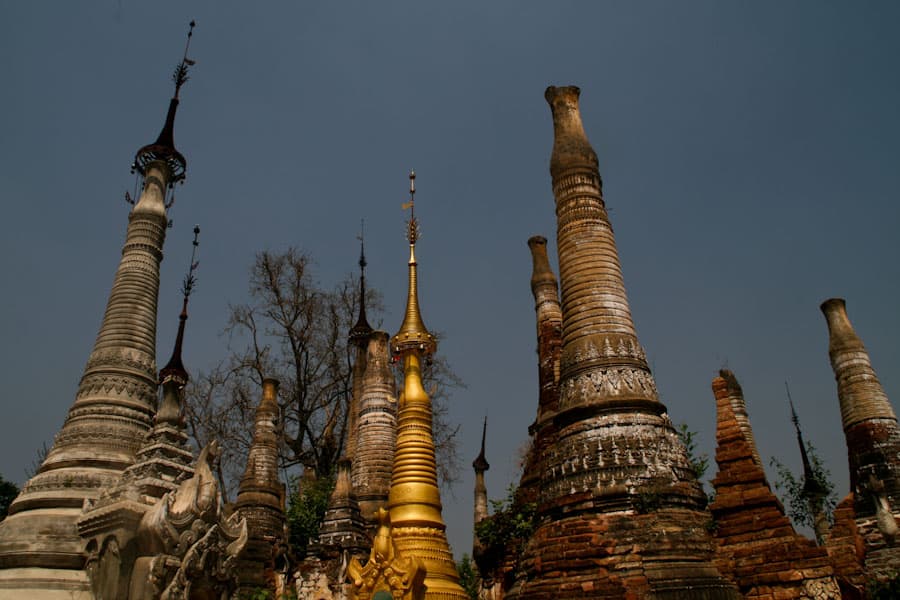
The holiest temple on Inle Lake is Phaungdaw Oo which is always busy with local pilgrims visiting the five ancient Buddha images. To attain merit Buddhists apply gold leaf to the statues and they have become so round that they are now unrecognisable.
For tourists the most well-known temple is the Jumping Cat Monastery where cats have been trained to jump through hoops. It’s a little bizarre but the old wooden monastery is worth a visit for the many Buddha images and we also found a tasty fried Shan tofu stall out the back.
Floating Gardens
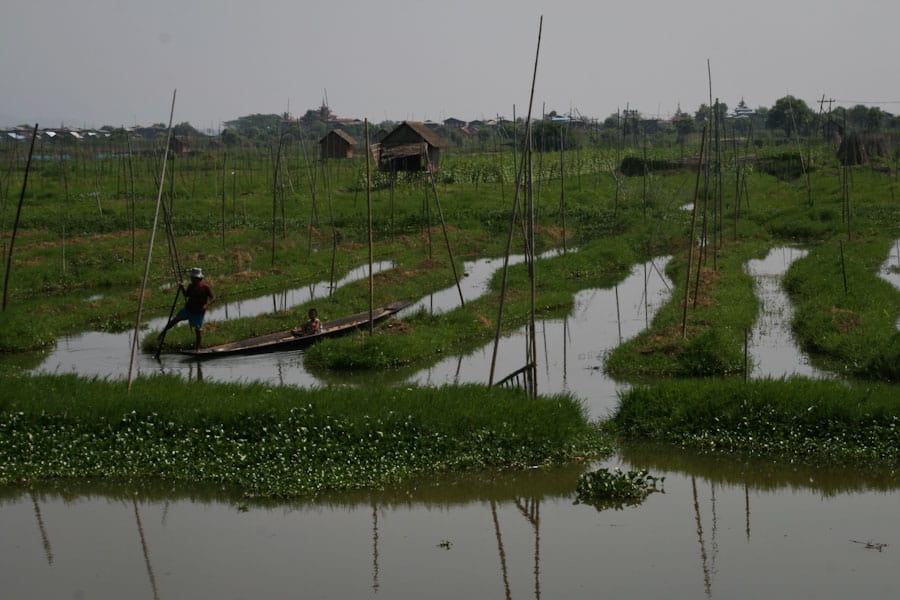
Every aspect of life is lived on Inle Lake and we were most impressed by the floating gardens. There are huge expanses of tomato and cucumber fields growing on mounds of soil floating on the lake. Farmers canoe between the rows to water the crops (an easy task here!) and add seaweed fertliser straight from the lake.
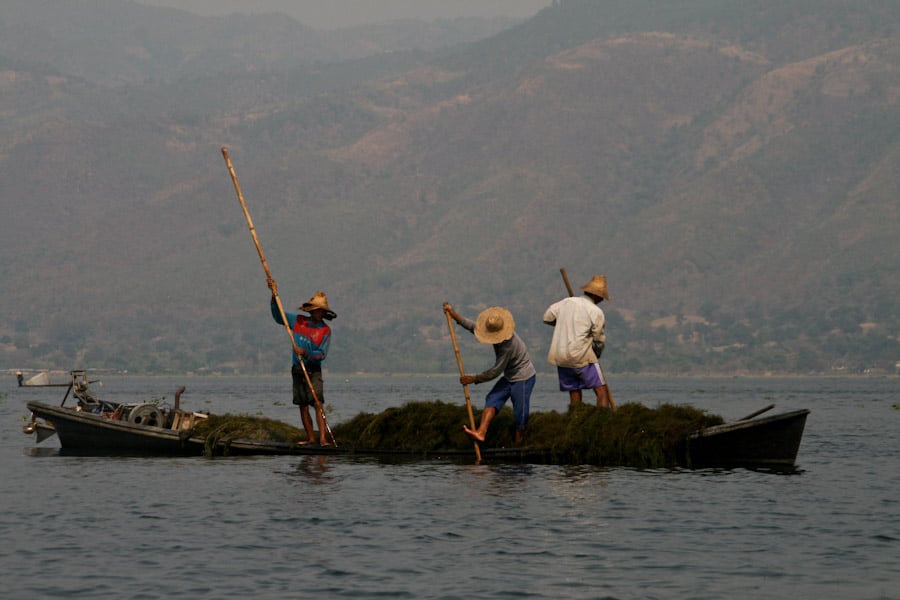
Practicalities
The main base for visiting Inle Lake is the small, relaxed town of Nyaungshwe. We recommend the Princess Garden Hotel – you can find more details in our Planning a Trip to Burma post.
We rented a wooden longtail boat with padded chairs for 17,000 kyat ($21) for a day including Inthein. Boats can seat up to five or more people. You can arrange trips with your hotel or any of the travel agencies in town.
It’s cold in the morning and hot in the afternoon so make sure you take a thick sweater or blanket, suncream and a hat.
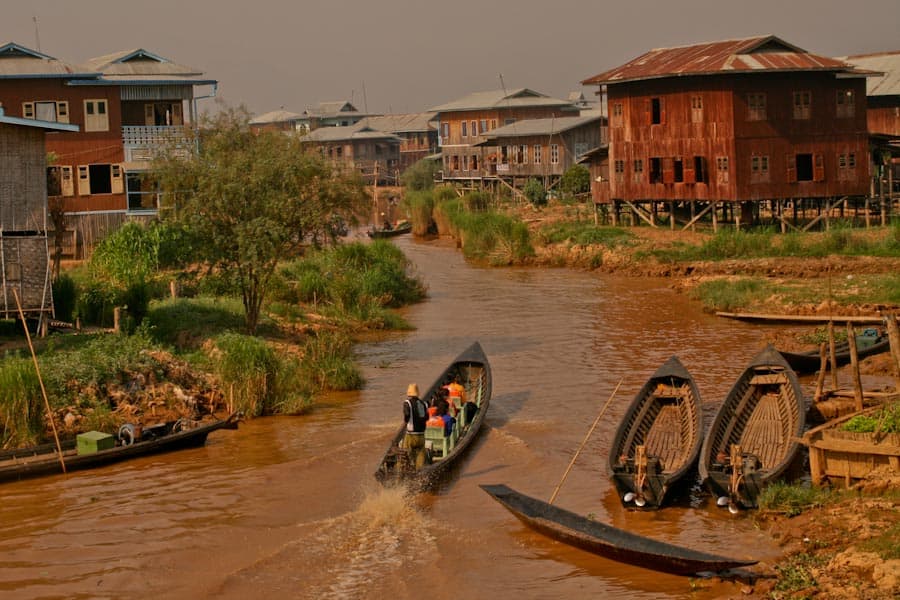
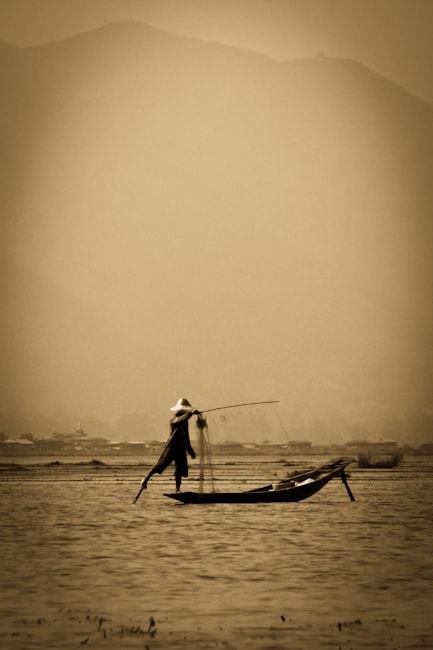
Appreciate for Inle lake promoting
Next time around we are in SEA, can’t miss Burma again! It was lovely to meet you guys in Chiang Mai. We are in Canada now, but we will set out again next month. What about you gus? In what part of the world now?
Great to meet you too. We are still in Thailand but on the beach in Koh Lanta.
Really great photos – thank you!
Wow, thanks for the thorough report back. I’ve bookmarked the page in the hope that one day I too will be able to visit the area :) #fingerscrossed
You’ve showcased one wonderful photo after another.
I reflect on how far you’re traveled since I met you last June. It’s been quite a year – and hard to top I suspect.
Thank you Leigh! It has been a great year although as we’ve spent nearly 7 months in Thailand, for us it doesn’t feel like we’ve travelled that much.
It looks so beautiful. I love your photos as usual. Definitely definitely need to go to Burma. Did you guys check out Burma’s beaches by the way? I heard that they are still really secluded and unspoiled by tourists.
We didn’t make it to the beaches but I well believe that they’d be empty.
I so badly want to get to Burma! These images are amazing, and they just peak my interest more. I am definitively going to rent a boat like this when I travel to Burma. Much Thanks Guys!
Inle Lake has become one of our favourite places so we definitely recommend it.
Your pictures are stunning, so I can only imagine how amazing it must have been to witness all of these sights firsthand! Also, the dexterity and balance required by those fisherman is ridiculously impressive. I hope Tony and I get a chance to see a few floating villages when we’re in SEA. It really strikes home just how important waterways are to these people when you see the various ways in which life springs up around them.
We love seeing how the waterways are the centre of life – for transport, laundry, washing, playing, everything. It’s a really vibrant place.